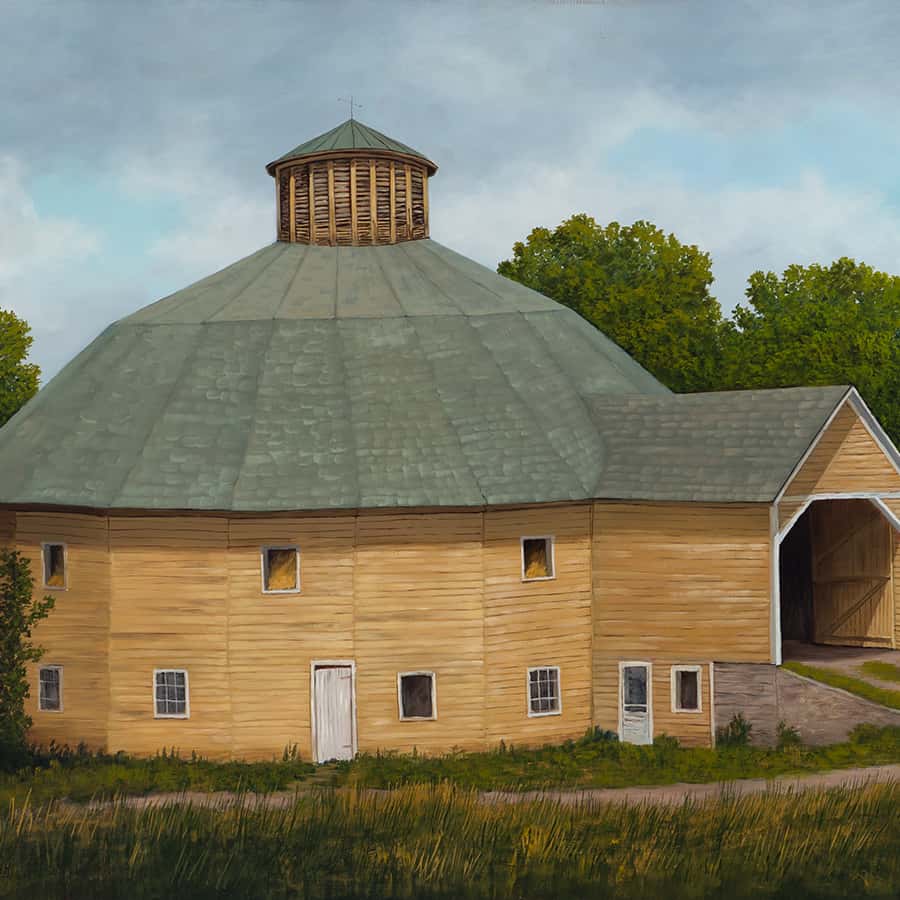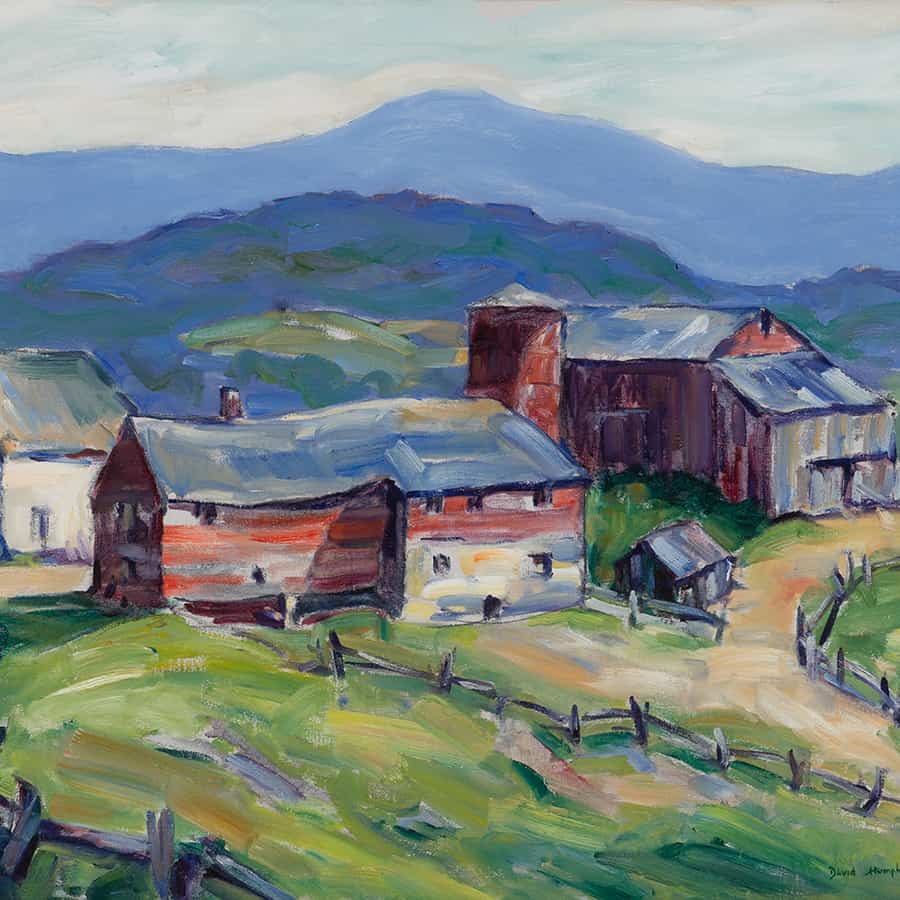Farms & Barns
It is hard to think of a topic that is more relevant to the identity of Vermont and Vermonters than farming. That so many of the early 20th-century paintings in The Orton Collection of Vermont art depict family farms is no surprise. But the farms, generally, were not that small. The average farm in Vermont around 1950 was a little over one hundred fifty acres, laid out as homestead, barnyard, kitchen garden, crop land, hay fields, pastures, sugarbush, and woodlot. And perhaps a pond or two.
The Orton Collection includes a collec¬tion-within-the-collection of artworks with barns as the subject matter, and seen together the paintings and prints make an interesting gallery of vernacular architec¬ture. Not all barns are the same, and there is a wide range of ways that the artists in Vermont looked at their architecture.
Excerpt from the book For the Love of Vermont: The Lyman Orton Collection

The Round Barn, Morrisville, Vermont
Oil on Board | 20 x 30 in.
Arthur Jones (1928–2020)
The barn in Arthur Jones’s painting was built in 1916 in Morrisville, Vermont. It is not round; it is actually an icosagon with 20 sides. Round barns are not common in Vermont; the few that exist were built in the late 1800s or the early 1900s.
Builders and farmers say there is no special practicality to a round barn, and they were more difficult to build. This barn was originally red, then painted yellow in the 1950s, as Jones saw it. During a 2008 restoration, it was painted red again.
This is one of Jones’ stories about painting farm scenes:
A fellow asked if I would include a cow in one of my scenes and I finished the painting and mailed it. When he got it, he called me because I outsmarted him . . . the title of the painting was Cows Behind the Barn. And he loved it . . . I’d rather paint an old truck or an old rake than human activity.

Vermont Barns, 1935
Oil on Canvas | 32 x 40 in.
David Humphreys (1901–1970)
David Humphreys was originally from Morristown, New Jersey and was a Princeton graduate. Known as one of “the Dorset Painters,” he was a generation younger than the earliest group of painters who settled in Dorset.
In 1927, Humphreys and the artist Bea Jackson, by then a married couple, went to study art in France. They returned to the United States well before the outbreak of World War II and settled in Dorset around 1941. Humphreys was known for his landscape paintings of Vermont as well as his paintings of France.
He was on the board of the Southern Vermont Artists, serving as the organization’s treasurer for several years. His work was shown at New York’s National Academy up until his death. The Dorset Historical Society and Southern Vermont Arts Center have collected works by David Humphreys.
